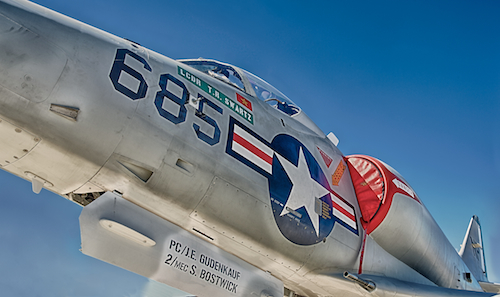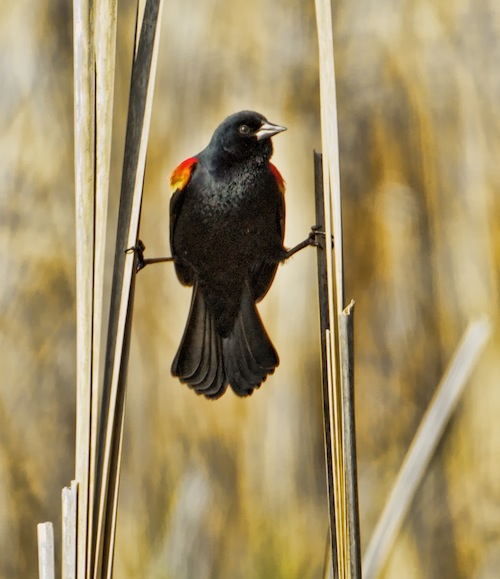2012-09-12-08-20-08-B65E0907.jpg
The Little Things Make a Difference
The opening image isn't perfect from a composition standpoint (I don't like the dark line running right across this Wood Duck's head or the contrast change running through his head) but the angle and position is pretty good. Good eye and head position compliment the upright pose of the bill, turned slightly towards the camera and the gap between the beak and the body looks natural.
Discussed below are a few of the things to avoid.
Aperture-2.jpg
This first image is a non-starter, the top of the log cuts right through the head and bill.
Aperture-3.jpg
The second image has the bottom line of the bill "merged" with the top line of the body - doesn't appear natural and is a little disruptive.
Aperture-4.jpg
The third image is better, there is separation between the bill and the body - but just a sliver. Again, this is a little distracting to the eye. The composition (in the opening photo) has more separation and a more upright head angle, producing the best overall image.
As your photography improves, you should begin looking for these types of details in the field - and understanding when to pull the trigger. It comes with practice and will naturally get better with the more images you take. You'll notice things like eye contact and head angle - when the background is not working for you and when various elements are pleasingly separated.
Stay in Focus,
Mark





 Yes, for outdoors shooting it's hard to beat the "magic hours" of sunrise and sunset - and the two to three hours after sunrise and before sunset aren't too bad either. But what do you do with that "11-3" slot? Here's two scenarios to try.
Yes, for outdoors shooting it's hard to beat the "magic hours" of sunrise and sunset - and the two to three hours after sunrise and before sunset aren't too bad either. But what do you do with that "11-3" slot? Here's two scenarios to try.
 What a difference three years can make!
What a difference three years can make!
 Just Hanging Around . . . Waiting for a Chance to Split
Just Hanging Around . . . Waiting for a Chance to Split
